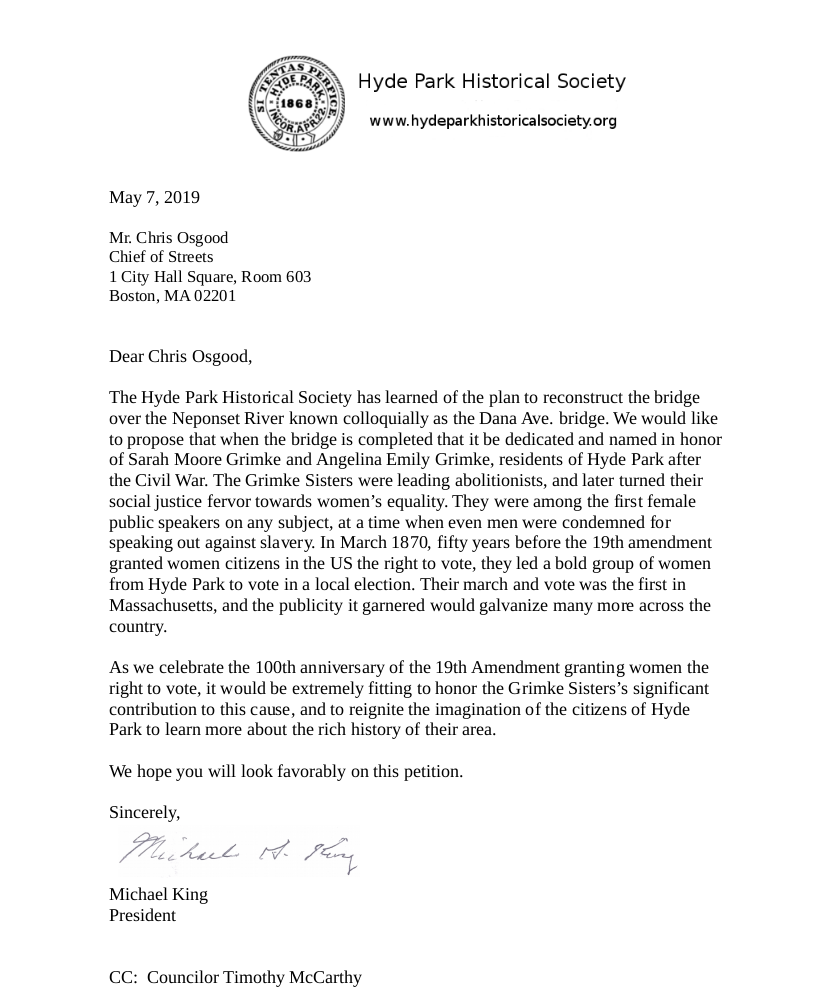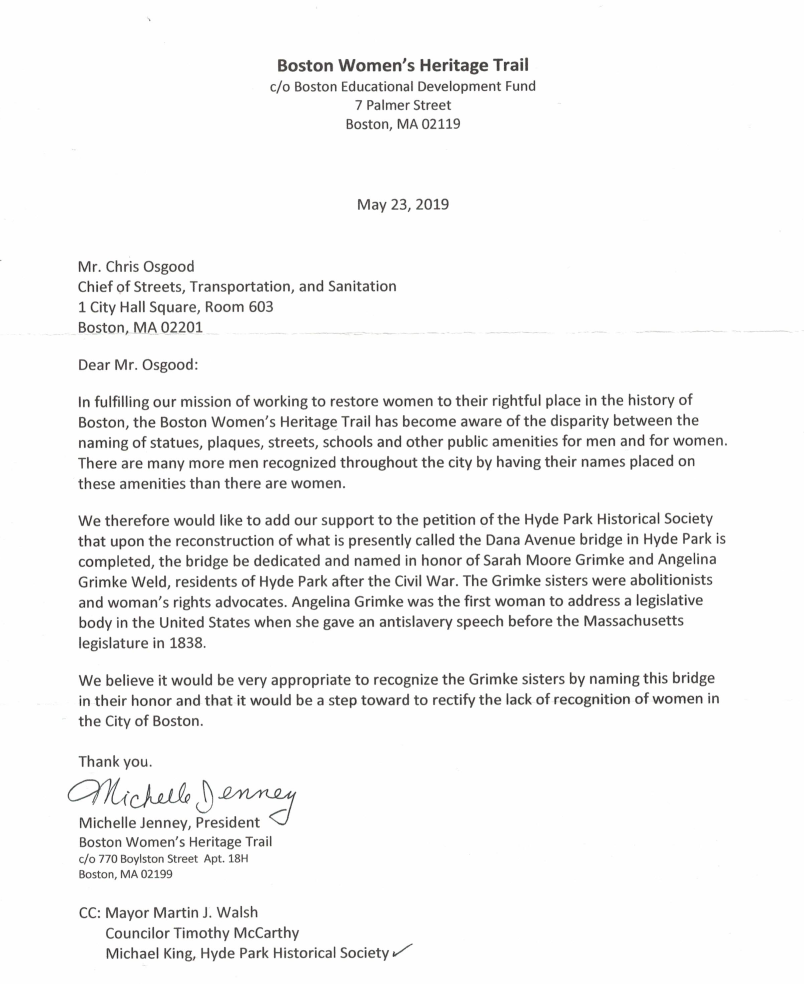54th Regiment Massachusetts Volunteer Infantry, Company A
Attention Given to Weld/Grimké Gravestone
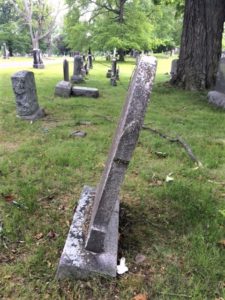 It came to the attention of members of the Hyde Park Historical Society (HPHS) that the gravesite of some of Hyde Park’s most historical figures, the Weld/Grimké family, needed cleaning and repair. Members of this family are interred on Evergreen Walk in Mount Hope Cemetery, Boston.
It came to the attention of members of the Hyde Park Historical Society (HPHS) that the gravesite of some of Hyde Park’s most historical figures, the Weld/Grimké family, needed cleaning and repair. Members of this family are interred on Evergreen Walk in Mount Hope Cemetery, Boston.
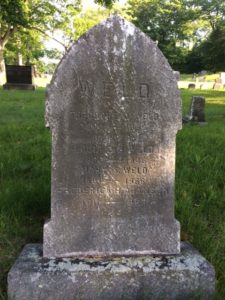
Theodore Dwight Weld (1805-1895), his wife Angelina Emily Grimké Weld (1805-1879), and her sister, Sarah Moore Grimké (1792-1873) moved to Hyde Park in 1864 and lived on Fairmount Hill.
The trio were early and ardent abolitionists and friends of William Lloyd Garrison, Lucy Stone, and Frederick Douglass. Together they wrote “American Slavery As It Is” in 1839, a comprehensive and exhaustive description of the state of slavery in the United States. Their book was used as the source material by Harriet Beecher Stowe for her book “Uncle Tom’s Cabin” which was influential in changing the tide of public opinion on slavery prior to the Civil War.
As a result of the sisters’ experience on the lecture circuit demanding freedom for enslaved people, they began to see the necessity of gaining equal rights for women and began to speak out. Angelina is known for being the first woman to address a state legislature in the US when in 1838 she spoke in the Massachusetts State House decrying slavery.
As prominent suffragists, in 1870 some 50 years before the nineteenth amendment granted women the right to vote, the Grimké sisters participated in a march and local election casting ballots in Hyde Park sending shock waves around the country. In 2019 the Hyde Park Dana Avenue bridge was dedicated to the sisters for their suffrage effort.
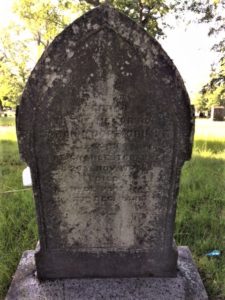
In the Summer of 2021, the Society began the process to have the grave site made fitting for these distinguished citizens. Kelly Thomas from the Historic Burying Grounds Initiative, Boston Parks and Recreation Department approved the project, and Kevin Duffy of Line and Stone Inc, Monument and Sculpture Service, Arlington MA, completed the work.
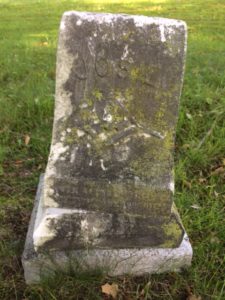
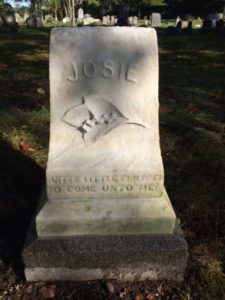
The Weld name on the front side of the upright gravestone faces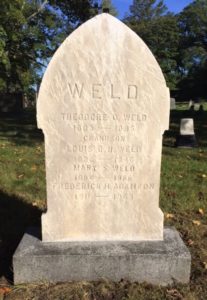 Evergreen Walk and lists four family members, although eleven are interred in the family plot. The backside of the stone has information solely on Sarah Grimké. It is likely that her name originally faced the road, she being the first person in the family to die. Twenty-three years later the Weld name was added, and that side now faces the road.
Evergreen Walk and lists four family members, although eleven are interred in the family plot. The backside of the stone has information solely on Sarah Grimké. It is likely that her name originally faced the road, she being the first person in the family to die. Twenty-three years later the Weld name was added, and that side now faces the road.
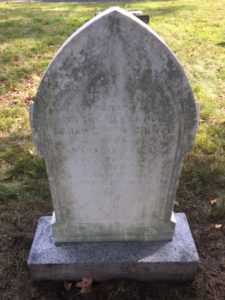
Interestingly, Angelina Grimké Weld’s name is omitted on the family gravestone because she may have requested so. Theodore Weld followed her instructions and buried her in plain clothing with a simple graveside ceremony. The HPHS funded and installed a simple flat gravestone only to recognize Angelina, not to glorify her.
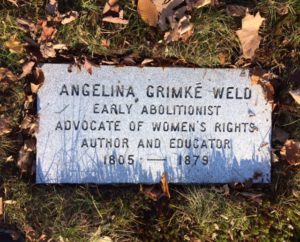
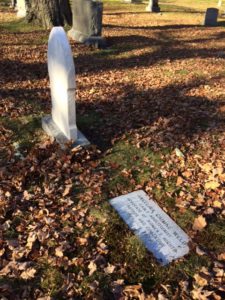
When the Hyde Park Branch Library opens for community meetings, lecture series hosted by the Hyde Park Historical Society will resume in Weld Hall.
If you would like to join or support the work of the HPHS you do so on this site. Questions comment to info@hydeparkhistoricalsociety.org.
*Evergreen Walk is .4 mile from the front gate. Follow Central Avenue which is to the left of the flag pole. Go up the hill and turn left on Grove Avenue ( .3 mile). Take the 1st right and the gravesite will be on on your right side up near the 3rd tree.
The Pride of Hyde Park
When he was growing up in Hyde Park, and when he pitched for the Boston Red Sox, Manny Delcarmen was known as “The Pride of Hyde Park.” After a successful career in Major League Baseball, he has continued to be involved in the community where he grew up.
Soon after Manny began his career at Fenway Park, Steve Buckley wrote a great profile on Manny for the Boston Herald. The Boston Park League website has the article.
https://bostonparkleague.org/local-boy-does-good/
“It was a scene from an earlier, simpler time, before the onslaught of cell phones, pagers and wide-screen, high-definition television. The Padres, a longtime entry in the Boston Park League, and in a scramble for the BPL’s two remaining playoff spots, had just emerged with a 6-3 victory over Cannon Club at Hyde Park’s Ross Field, but now the players, instead of celebrating their victory, were milling together in the parking lot, glued to their car radios, hanging on every word that barked from various speakers.
Incredible. People, standing together, focused, alert, listening to the radio. This is how folks heard of the attack on Pearl Harbor, the death of Franklin Delano Roosevelt, the Kennedy assassinations.
But in 2005, when and why do people hunker over … a radio? For these guys, the answer was simple: Manny Delcarmen, a product of Hyde Park, whose family’s house is just a few blocks from Ross Field, was making his major league debut with the Boston Red Sox.
“We had heard he had been called up by the Red Sox,” said Brandon Cody, a Padres infielder and a 2004 graduate of Amherst College. “And late in our game, we heard he was warming up. Manny Delcarmen was warming up for the Red Sox! It was unbelievable.
“When our game ended, we all went to our cars and turned our radios on. When they said Manny’s coming in to pitch, the place just erupted.”
“Nobody could move,” said Nelfi Morales, a veteran Padres infielder. “It was, like, ‘Wow, that little kid is pitching for the Red Sox.’ It was just awesome.”
It’s not unusual for the Red Sox to reach into their minor league system and bring a fresh arm to the big leagues. In 1995, the last year the Red Sox finished in first place in the American League, then-general manager Dan Duquette paraded 26 different pitchers in and out of Fenway Park.
But the news that Manny Delcarmen had joined the Red Sox was different, in a shocking, numbing and breathtakingly exciting way.
Local role model
Manny Delcarmen is local. Born right here in Boston. He spent his early years in Jamaica Plain, and his teen years in Hyde Park. He is a graduate of West Roxbury High School. And while many Red Sox players would be lost if they ventured two blocks south of Newbury Street, Delcarmen has a weathered cab driver’s knowledge of the city. As recently as one week ago, when he was still pitching for Triple-A Pawtucket, Delcarmen showed up at Dorchester’s Casey Field to watch the Boston Park League’s Carlson Club, whose roster includes his young brother, Eddie, as well as a number of ex-teammates from his West Roxbury High days.
“He was sitting right over there,” said Carlson Club’s Jose Diaz, one of Delcarmen’s closest friends as well as his catcher at West Roxbury High. “He was showing up all the time when Pawtucket wasn’t playing. It wasn’t any big deal to him. He wanted to be with his friends.”
If he turns out to be a success with the Red Sox – and he worked a 1-2-3 inning of relief against the Tampa Bay Devil Rays in his debut on Tuesday – Delcarmen is going to have more friends than he thought imaginable. Once little more than a likeable kid from Hyde Park whose baseball talents caught the attention of the Red Sox, Delcarmen is now a symbol of pride in Boston’s many neighborhoods.
A son of Dominican-born parents, Delcarmen is a product of the city. Now, he is being looked upon as the prince of the city.
“Manny has realized his dream, but he’s also realizing all of our dreams,” said Victor Ortiz, a youth development specialist in Worcester who grew up in Dorchester. “I remember years ago, playing catch with this energetic little kid. Now you turn on the TV and he’s with the Red Sox.
“I think it’s still just sinking in with a lot of people.”
Ortiz, who has written about sports for local weekly newspapers, along with carving out a niche as a regular caller to sports radio WEEI – he’s perhaps better known as Victor “I Told You So” from Boston – isn’t so much interested in how Delcarmen’s success will help the Red Sox, but, rather, how it will help Boston’s kids.
“If Manny makes it with the Red Sox,” Ortiz said, “just think of all the 12-year-old kids who are going to want to be like him.”
Pressure at home
The Red Sox have had their share of Massachusetts natives over the years, most recently Framingham’s Lou Merloni. In 1964, Tony Conigliaro, raised in Revere and Swampscott and a graduate of St. Mary’s High in Lynn, famously debuted for the Sox, hitting a home run the first time he stepped to the plate at Fenway Park. By the time he was 22 years old, he had already hit 100 career home runs.
But the postcard-perfect story – local boy makes good with Red Sox – came with a price.
“You know how it is in Boston,” said Billy Conigliaro, Tony’s younger brother, who himself debuted with the Sox in 1969. “It can be a tough town to play in, and I believe even tougher when you’re from here. The first time I ever played at Fenway, I looked up and saw my high school coach in the stands. It puts a little pressure on you, because you don’t want to fail in front of the people who care about you.
“Tony got picked off second (base) in this one game, and then I got picked off first,” Conigliaro said. “The next day, there was this headline that said the Conigliaros should take a course in family baserunning. I didn’t blame the paper. They’re just bringing color to their coverage. But you get a little embarrassed, because your friends are reading that stuff.”
Does Conigliaro have any advice for Delcarmen?
“Yeah, don’t hang around with Manny Ramirez,” said Conigliaro. “And I mean that. Hang around with the wrong guys, guys who don’t care, and you develop bad habits. Also, pace yourself. People would talk about Tony’s nightlife and all that, but, believe me, he got his sleep. And he took excellent care of himself.”
Rather than being a burden, Delcarmen’s friends seem more like a support system. Note that seeks out, that he still shows up at Casey Field and other Boston Park League venues, where he excelled while pitching briefly for BPL entry Mass. Envelope in 2000, before signing with the Red Sox as a second-round draft pick.
“I’ve known him all my life, and when we were kids we always said we were going to play for the Red Sox some day,” said Diaz, who was with Delcarmen the night he was called up. “People are going to say, ‘Oh, he’ll change now. He’ll want to have fun.’ Well, Manny’s always had fun. I bet he’ll be the same guy he’s always been.”
It helps that Delcarmen grew up in a baseball environment. His father, Manual “Cookie” Delcarmen, played some minor league baseball back in the day, and later, starred for a local softball juggernaut called the Red Hats.
“Manny was taught by his father to respect baseball,” said Jose Diaz Sr., one of Cookie Delcarmen’s oldest friends as well as a former teammate on the Red Hats. “Manny has always lived to play baseball, so the mound is his home. He’ll be comfortable there, even if it’s Fenway Park with all those people watching.
“I talked to him on the phone when he got called up. I told him, ‘You’ll be so nervous you’ll have diarrhea.’ That’s our little joke. And he may have been a little nervous that first time on the mound, but that will go away.”
The scouting report
Five years ago, Dorian Rojas was standing at shortstop at West Roxbury High as the game was about to begin, Manny Delcarmen on the mound. As Delcarmen kicked into his delivery, a platoon of scouts behind the backstop directed their radar guns at the young pitcher.
“We had seen scouts before,” said Rojas, who now plays at Cumberland University in Lebanon, Tenn. “But this was different. The scouts were everywhere, and I almost jumped out of my shoes. But it didn’t bother Manny. That’s why I think he’ll be a success with the Red Sox.”
As Rojas spoke, Carlson Club’s game against the Padres had just been postponed because two of the light towers at Casey Field were not working. Rojas and his teammates began collecting their gear to return home, but there was a universal belief at Casey Field on this night: Now that Manny Delcarmen has emerged from Boston’s neighborhoods to play for the Red Sox, perhaps the city will do a better job taking care of its athletic facilities.
“You don’t realize how easy it is for these kids to just give up and stop playing,” said Josue Feliciano, a player-coach on Carlson Club. “For a lot of kids, if you’re not playing baseball, you’re on the streets.”
Ed Neal, who coaches the Padres, and is also head coach at Roxbury Community College, put it this way: “Everyone’s going to want to be the next Manny Delcarmen. The best way to make that happen is to have better ballparks.”
Copyright © 2005 Boston Herald, all rights reserved. Written by Steve Buckley, and reposted with his permission.”
Hyde Park Library’s Historic Garden
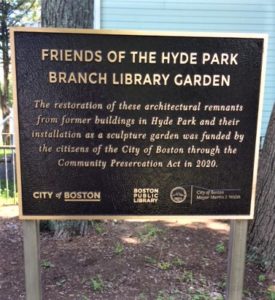 In 2019, The Friends of the Hyde Park Library received Community Preservation Funds (CPA) from the city of Boston to transform an unused section of the library’s lawn into an historic garden incorporating artifacts of local significance. HPHG-brochure
In 2019, The Friends of the Hyde Park Library received Community Preservation Funds (CPA) from the city of Boston to transform an unused section of the library’s lawn into an historic garden incorporating artifacts of local significance. HPHG-brochure
For many years library patrons had asked about the two figures and the Corrigan stone lying in the mulch on the Everett Street side of the library.
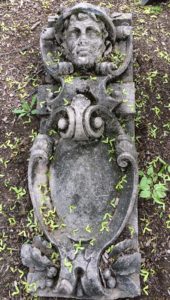
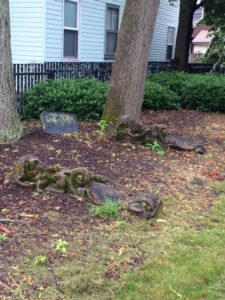
Most thought the objects to be gravestones. In fact, they are figures of Mercury, the god of transportation and commerce, from the demolished railroad station. The figures were donated to the library by Edward Gonski who in 1974 saved them after demolition. EdRemembers
The Hyde Park Historical Society (HPHS) wasn’t sure if the figures were worth saving, so they put the question to Jonathan L. Fairbanks, the Curator of the American Decorative Arts and Sculpture Department at the Museum of Fine Arts Boston. His response was ‘Yes’. MFALetter_ 1976
The figures were removed in 2019 by Daedalus Inc., monuments, sculptures and fine arts conservators from Watertown, MA. This firm previously repaired, cleaned and remounted the Civil War monument in Fairview Cemetery.
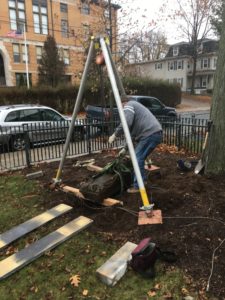
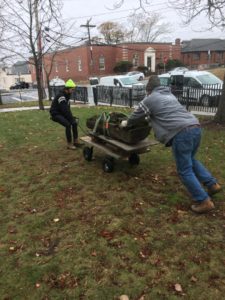
Brief History of the 1914 Station
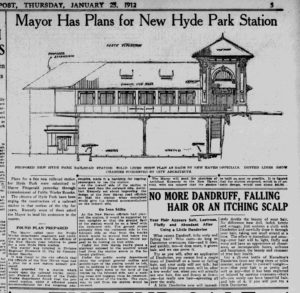 After years of negotiation, design change, economic worries and the town’s annexation to Boston, the New York New Haven & Hartford Railroad Company (NYNH&H) Hyde Park station opened on April 15,1914. HP Businessmen -1912 , Contractor- 1912 HPGT- 4-15-1914 station opened
After years of negotiation, design change, economic worries and the town’s annexation to Boston, the New York New Haven & Hartford Railroad Company (NYNH&H) Hyde Park station opened on April 15,1914. HP Businessmen -1912 , Contractor- 1912 HPGT- 4-15-1914 station opened
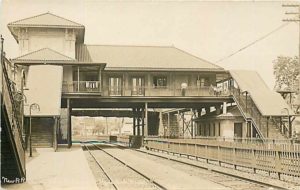
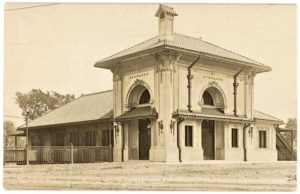
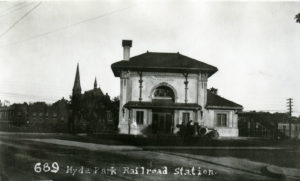
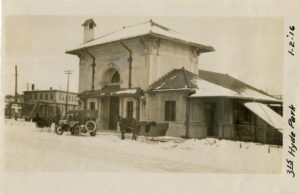
The entrance and ticket office was on Business Street and the main waiting area extended over the tracks so approaching trains could be seen from bother directions. There was a smaller waiting room on the inbound side.
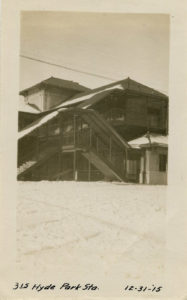
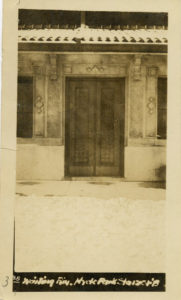
All 1915-1916 photographs in this article are from the Archives & Special Collection, University of Connecticut Library.
We’re unable to confirm the station’s architect even with assistance from New England railroad historian Robert Belletzkie and from the NYNH&H archivist at the University of Connecticut. The belief is that it is a redesign, by a railroad company engineer, of a Cass Gilbert station. 1911GilbertMention. Anthony Sammarco and an expert at the Cass Gilbert Society concurred. Note the similarity of the HP station with Gilbert’s 1908 Westchester Avenue station in the Bronx, New York.
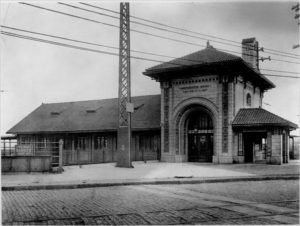
Railroad services declined in the twentieth century with the expanded use of airplanes, trucking routes and cars. Railroad companies reduced their losses by discontinuing routes and by doing minimal maintenance. Vandalism at the station increased. At one time the HP station was considered the pinnacle of elegance and functionality, only to be abandoned and became an eyesore.
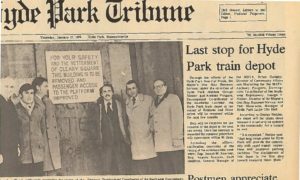
Since 1973, the Massachusetts Bay Transit Authority owned the commuter station area. The depot was demolished on July 9,1974. HPTribune7_11_1974
The only remaining structures are iron posts at the top of the stairways on River Street.
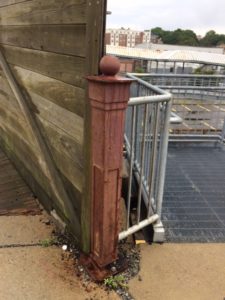
Hyde Park’s Clearly Square Station 2019
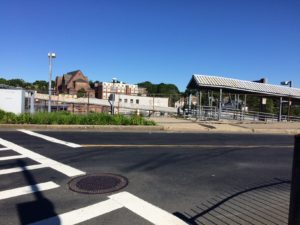
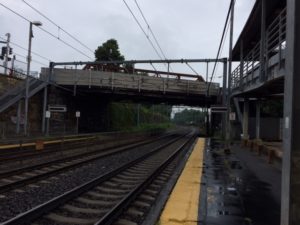
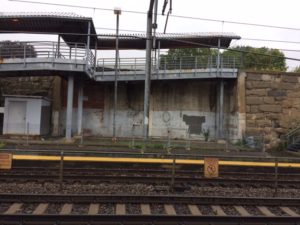
Mercury at the Hyde Park Library- 2020
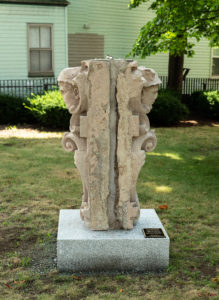
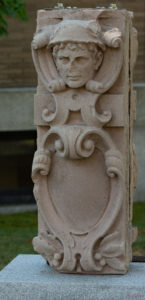
The Corrigan Stone
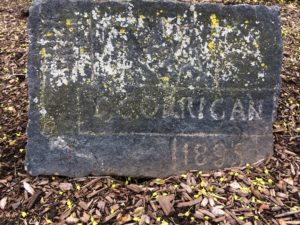 In 2006, this piece of granite was donated to the Hyde Park Historical Society by Virginia Foley who was given to hold for safekeeping by Atty William Slattery, Sr. Both attended St. Catherine’s School where the Corrigan stone was part of the foundation.
In 2006, this piece of granite was donated to the Hyde Park Historical Society by Virginia Foley who was given to hold for safekeeping by Atty William Slattery, Sr. Both attended St. Catherine’s School where the Corrigan stone was part of the foundation.
In 1895, a satellite school for the Most Precious Blood Parish was built on the corner of Washington Street and Foster Street which in 1930 became ChittickRd- 1930.
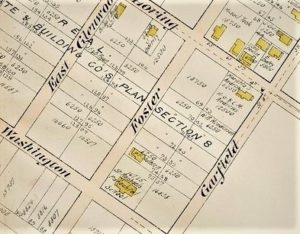
The school, taught by the Sisters of Charity of Nazareth, had four rooms, and five or six grades. Most students transferred to the central school on Maple Street and graduated after the eighth grade. 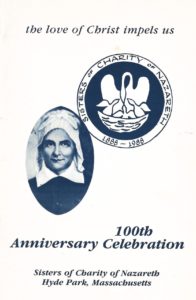 In 1921, after the retirement of Mother Catherine Spaulding, the name of the school in Corriganville was renamed, St. Catherine’s.
In 1921, after the retirement of Mother Catherine Spaulding, the name of the school in Corriganville was renamed, St. Catherine’s.
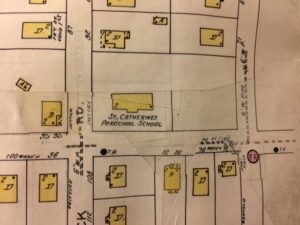
Read more about the 1981 centennial celebrations for Most Precious Blood Parish (MPB), and for the Sisters of Charity of Nazareth in material in the local history room at the HP library.
In 1954 the school was transferred to the St. Pius X parish in Milton. The archivist at the Archdiocese of Boston was helpful with the next piece of the puzzle. A memorandum from June 10, 1966 states “ the old school will be torn down ….and the land which consists of approximately 33,000 square feet will be sold.” The demolition was completed on Sept 16, 1966 by Duane & Company, and all salvage material became their property. The land was sold to Stephen J. Joyce of Milton who planned to build 5 homes on the property. Atty Slattery likely took the Corrigan stone from the demolition site.
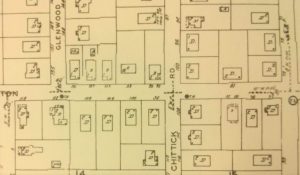
There was another satellite school in Readville that transferred to St. Anne’s Parish in 1921.
Thomas Corrigan (1845-1902) and his brother John (1836-1891) came to Hyde Park from Ireland in the late 1860’s. It is recorded in the 1st HP Annual Report that John’s resident tax for 1868 was $5.20. They worked as laborers and prospered which each owning a contracting /masonry business.
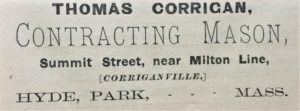
Thomas Corrigan built hundreds of foundations in the area. His measurements and calculations for the masonry jobs were included in estate material given to the HP Historical Society.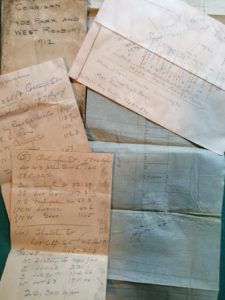
Thomas Corrigan owned property in many sections of HP.
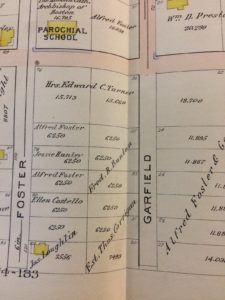
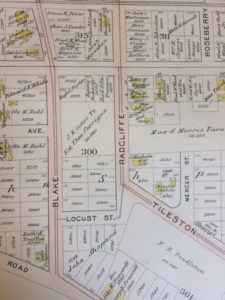
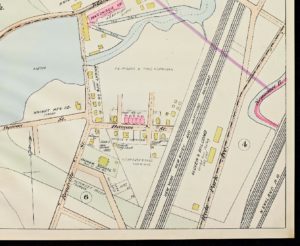
The neighborhood east of Water Street, now Truman Highway from about Dana Ave to Walcott Road was nicknamed Corriganville .
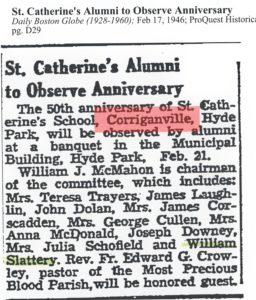 Corriganville Improvment Assoc 1925, CorriganvillTeam-1938
Corriganville Improvment Assoc 1925, CorriganvillTeam-1938
Thomas Corrigan was a generous donor to the Catholic church throughout his life and also after his death . page 1 TC will, page2 TC will
His obituary mentioned that he loved the United States and this area. He represented this feeling on the foundation stone, with a folk art image of a flag and a maple tree. Thomas Corrigan is buried in Mount Calvary cemetery, and John’s family is buried at Fairview Cemetery.
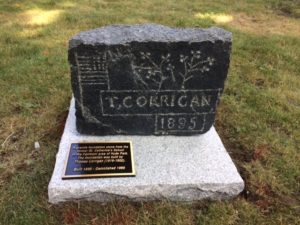
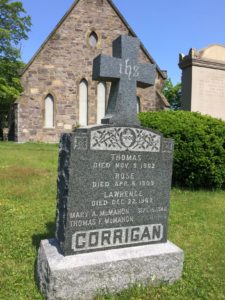
Thomas’s nephew, Thomas H. Corrigan (1867-1923) also a contracting mason, kept up the family tradition of supporting the church and there’s a small plaque near the church steps with his name.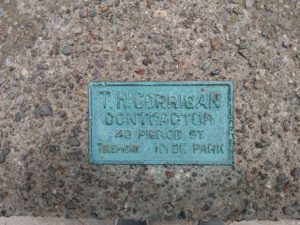
If other outdoor artifacts of significance to Hyde Park are brought to the Historical Society’s attention, they will be considered for placement in the library’s historic garden. In time, native plants will also be added.
Points of Interest in Fairview Cemetery
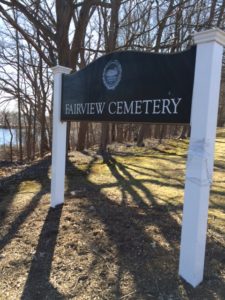 place to wander for exercise, nature and history. The Friends of the Hyde Park Library and the Hyde Park Historical Society have prepared a self guided tour of gravesites and monuments of interest. The decision to do this developed from interest generated by the fund raising project to purchase a grave stone for Dr. Rebecca Lee Crumpler, the 1st Black women physician in the US. (1864). You can learn about this successful Crumpler Fund project at friendshplibrary.org.
place to wander for exercise, nature and history. The Friends of the Hyde Park Library and the Hyde Park Historical Society have prepared a self guided tour of gravesites and monuments of interest. The decision to do this developed from interest generated by the fund raising project to purchase a grave stone for Dr. Rebecca Lee Crumpler, the 1st Black women physician in the US. (1864). You can learn about this successful Crumpler Fund project at friendshplibrary.org.Learn about some of the people buried in Fairview Cemetery by downloading this self guided tour.
Seaman W. Hughson Royal Naval Reserves. Born in Scotland. Died of the Spanish Flu aboard ship in 1918. Listed in the Commonwealth (countries) War Graves Commission.
Rebecca Crumpler (1831-1895) The 1st Black woman physician in the U.S. In 1884 wrote A Book of Medical Discourses in Two Parts.
Arthur Crumpler (1835-1910) Escaped from slavery in Virginia. Perpetual student, church activist and HP landowner since 1870.
Adolph Robert Kraus (1850-1901) German American sculptor known for the Boston Massacre Memorial on the Boston Common and monuments (Randidge, Wirth, Heinzen) in Forest Hills Cemetery.
Emma Thomas Bond (1846-1926) Enslaved in VA. Moved North in 1870. Matriarch of Homelands and Waterways: The American Journey of the Bond Family 1846-1926 by Adele Logan Alexander (1999).
USS Maine Memorial This plaque was made from metal salvaged from the ship that was destroyed in Havana Harbor on 2/15/1898, shortly before the start of Spanish-American War.
Joseph King Knight (1849-1927) President MA Dental Assoc. Major role on the building committees for the Congregational Church (1910), the Civil War monument (1911) and the HP railroad station (1914).
John Robert Bond (1846-1905) Biracial teenager from Liverpool, enlisted in the Union Navy. Active in HP and the veteran’s community. His family were friends with the Crumplers and the Trotters.
Civil War Monument (1911) MH Mosman’s walking figure is quite different from the usual uniformed, solemn standing soldier.
Amos Brainard (1824-1905) Brainard Milling Machine Co. Owner of many manufacturing patents. The 1st president of the HPHS.
John Joseph Enneking (1841-1916) Born in Ohio, wounded in the Civil War (Union). Studied fine art painting in Boston and alongside Monet and Renoir in France. Described as the first successful American Impressionist painter. Known for his New England landscapes and richly painted atmospheric sunsets.
Charles F. Jenney (1835-1900) Lawyer, judge, HP library trustee and Founder of the HP Historical Society.
David Higgins (1828-1897) Born in PEI, Canada. Served with the 6th Mass. Inf. Reg. Built many of the first homes on Fairmount Hill. His parlor on Fairmount Avenue was the 1st neighborhood classroom.
Thomas M. Menino (1942-2014) Five Term Mayor of Boston from 1993 to 2014. A lifelong resident of HP and known as the People’s Mayor and Urban Mechanic. Author of Mayor for a New America.
Gertrude S. Galloupe (1897-1984) Born in Sweden. US Navy Reserve Yeoman(F) at the Boston Navy Yard during WWI.
Flora D. Holtham (1885-1918) Died on the SS City of Athens struck by a French cruiser in dense fog on route from NY to Savannah. O Olive Gertrude Homans (1879-1899) Child actress lived on Gordon Avenue in HP. Best known for her role as Little Lord Fauntleroy.
William Henry Barritt (1848-1920) Portrait photographer and documenter of HP’s history. Photographs on HPHS website.
James Monroe Trotter (1842-1892) Born enslaved, grew up in freedom. Officer in 55th Mass. Inf. Reg. Teacher, postal worker, music historian and HP landowner. In 1887 was appointed Recorder of Deeds for Washington DC, by President Grover Cleveland.
William Monroe Trotter (1872-1934) Grew up in HP. At Harvard he was the 1st Black to receive Phi Beta Kappa honors. Co-founder/editor of the Boston Guardian. An activist for equality and social justice.
Geraldine Pindell Trotter (1872-1918) Born into Boston’s Black upper class. A civil rights activist, editor, and philanthropist.
Brigadier General Henry Beebee Carrington (1824-1912). Helped organize the Republican Party in 1854. Union officer in the Civil War. Commander of the Mountain District during Red Cloud’s War. He was a lawyer, professor, and the author of Washington the Soldier and Battle Maps and Charts of the American Revolution.
If you visit this Spring you will see daffodils at most of these graves and at a few others. This is the 1st year we’d planted bulbs, donated by the City of Boston, to brighten up and beautify the city. Hopefully the bulbs survived the winter and the squirrels.
NBC Boston Report: Land of Liberty, Hyde Park and the 54th Regiment
NBC Boston report on a vacant plot of land in Hyde Park which is the location where the 54th Regiment trained 160 years ago. Today, a development proposal is in place to build townhomes on the land, some are fighting to preserve it.
Land of Liberty: Hyde Park and the 54th Regiment – NBC report
Grimke Sisters Bridge Dedication
On the morning of Saturday, November 16, 2019, the Grimke Sisters Bridge dedication ceremony was held. The speakers were introduced by Tania Del Rio, executive director of women’s advancement in Mayor Walsh’s administration:
Mayor Marty Walsh (3min 40s)
City Councillor Tim McCarthy (10min)
Barbra Lee, Founder and President, Barbara Lee Family Foundation (14min 10sec)
Catherine Allgor, President, Massachusetts Historical Society (19min 55sec)
Elisa Birdseye, Curator, Hyde Park Historical Society (26min 25sec)
The full video of the ceremony is below.
Grimke Sisters Bridge
On Saturday, November 16th, Boston mayor Marty Walsh will dedicate the rebuilt Dana Ave bridge as the Grimke Sisters bridge – https://www.boston.gov/calendar/grimke-sisters-bridge-dedication.
The Society would like to thank its curator, Elisa Birdseye, for her efforts to promote the renaming of the bridge, including the following letter she wrote for the Society.
And thanks to Michelle Jenney, president of the Boston Women’s Heritage Trail, for the supporting letter.

